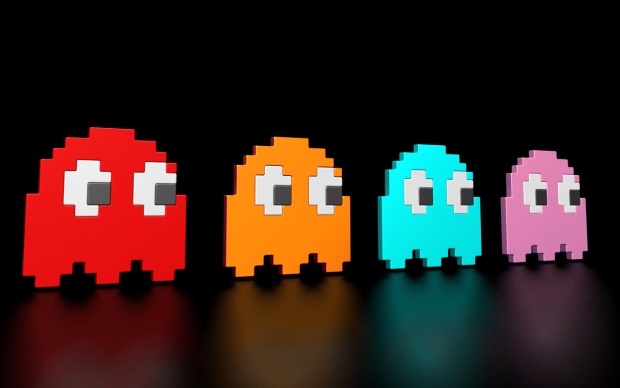Most boring headline ever, right? Maybe a bit out of date too? I mean, Pac-Man is a bit old by now so why talked about how the ghosts in the game work? Mostly because it’s an amazing reminder of how simple programming often works better than complex rules, and a great example of how little details are so insanely important to how we interact with games.
You can read the excerpt from Game Internals write up below. I find it so interesting to actually look how games function and how the tiny details are so important. Most of the times you just sit down and play a game for fun, but if you look at it while you play it’s ingenious how developers let us learn the rules of the world with tiny visual cues that we barely notice. Those developers are smart guys. The full article is a really interesting read if you’re looking for something to do.
Or you can just read Ashley Davis’s awesome piece on it.
Understanding Pac-Man Ghost Behavior [GameInternals, via Boing Boing]
[Image]
The next step is understanding exactly how the ghosts attempt to reach their target tiles. The ghosts’ AI is very simple and short-sighted, which makes the complex behavior of the ghosts even more impressive. Ghosts only ever plan one step into the future as they move about the maze. Whenever a ghost enters a new tile, it looks ahead to the next tile that it will reach, and makes a decision about which direction it will turn when it gets there. These decisions have one very important restriction, which is that ghosts may never choose to reverse their direction of travel. That is, a ghost cannot enter a tile from the left side and then decide to reverse direction and move back to the left. The implication of this restriction is that whenever a ghost enters a tile with only two exits, it will always continue in the same direction.
However, there is one exception to this rule, which is that whenever ghosts change from Chase or Scatter to any other mode, they are forced to reverse direction as soon as they enter the next tile. This forced instruction will overwrite whatever decision the ghosts had previously made about the direction to move when they reach that tile. This effectively acts as a notifier to the player that the ghosts have changed modes, since it is the only time a ghost can possibly reverse direction. Note that when the ghosts leave Frightened mode they do not change direction, but this particular switch is already obvious due to the ghosts reverting to their regular colors from the dark blue of Frightened. So then, the 1/60-of-a-second Scatter mode on every level after the first will cause all the ghosts to reverse their direction of travel, even though their target effectively remains the same. This forced direction-reversal instruction is also applied to any ghosts still inside the ghost house, so a ghost that hasn’t yet entered the maze by the time the first mode switch occurs will exit the ghost house with a “reverse direction as soon as you can” instruction already pending. This causes them to move left as usual for a very short time, but they will almost immediately reverse direction and go to the right instead.





Published: Dec 4, 2010 09:00 am